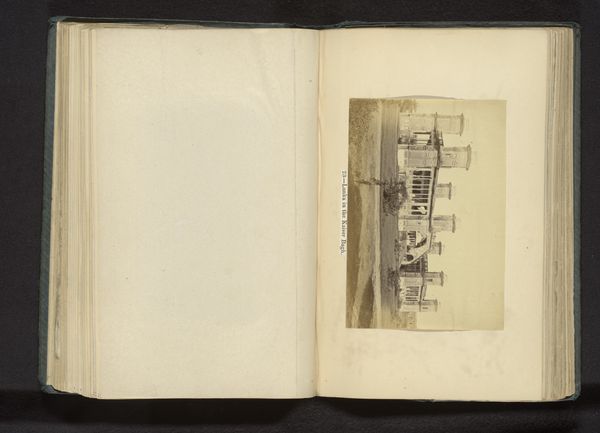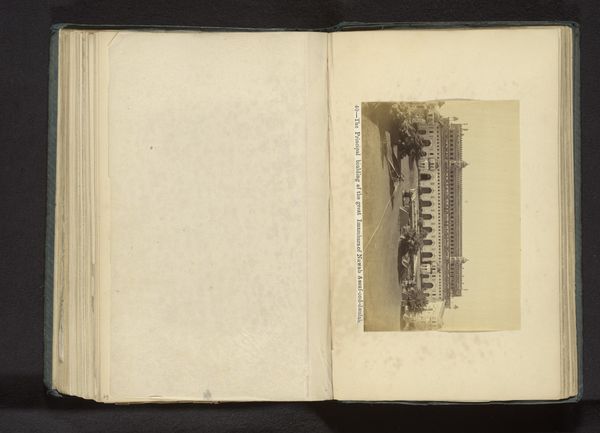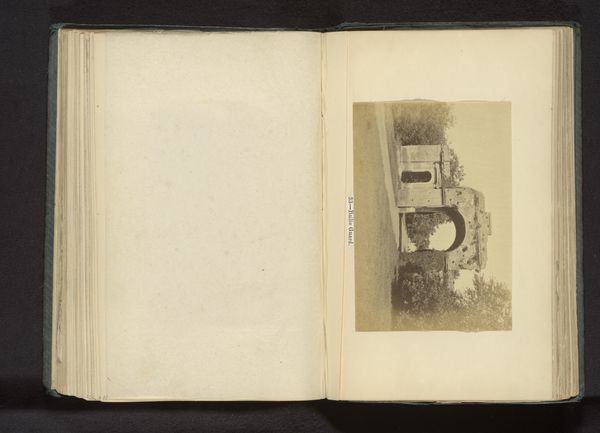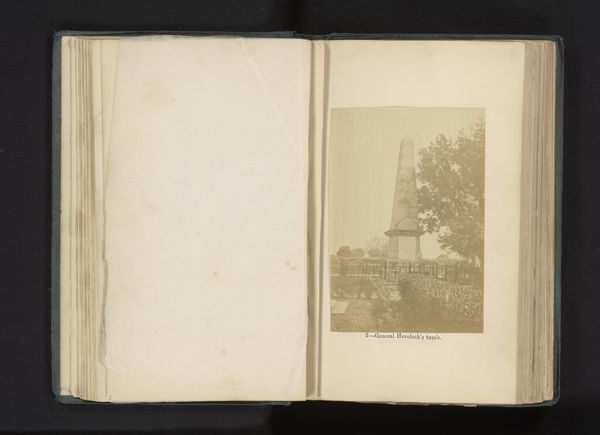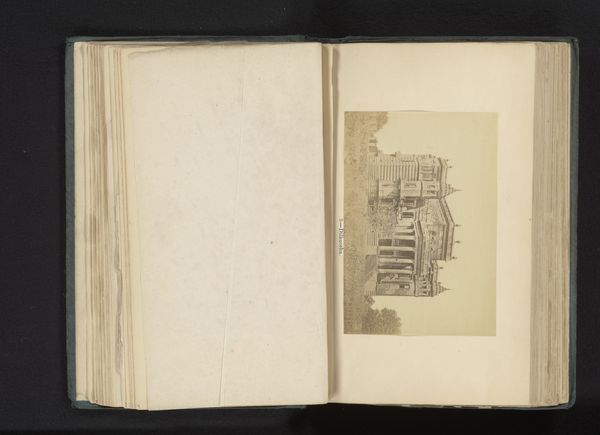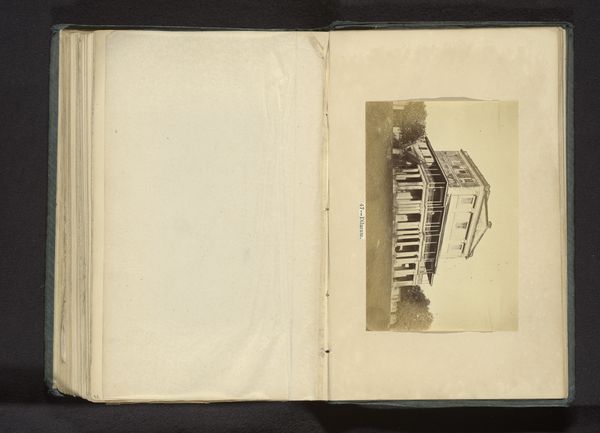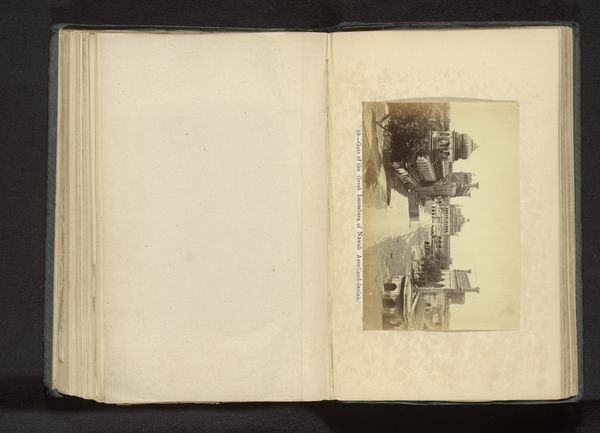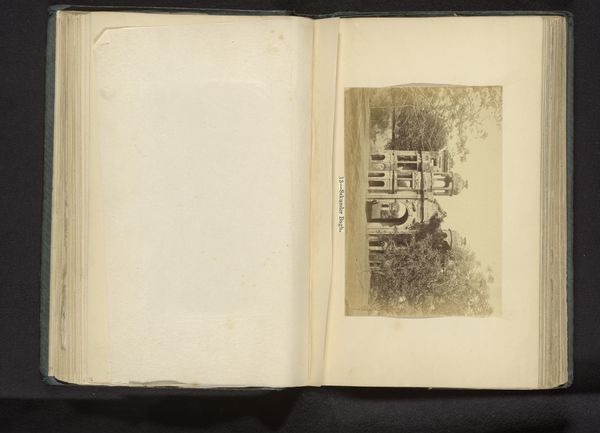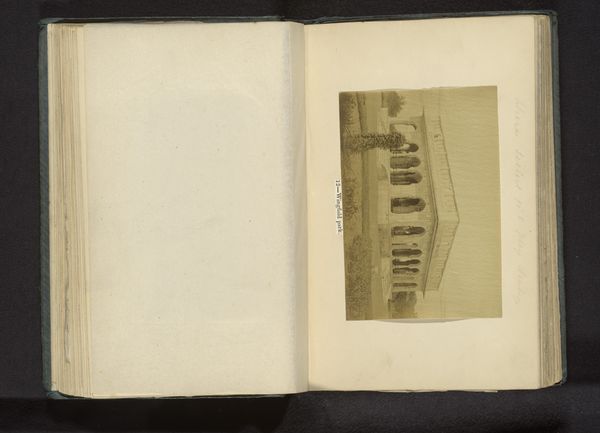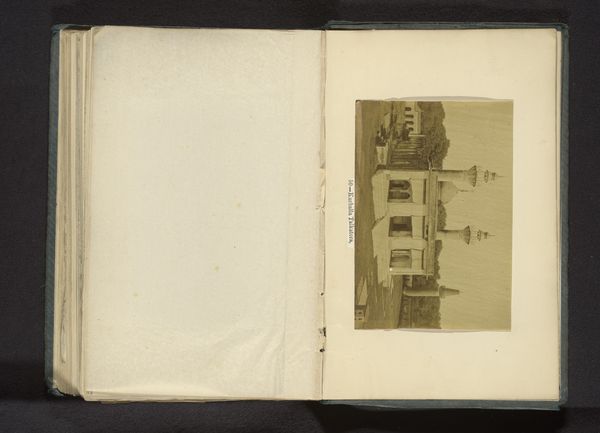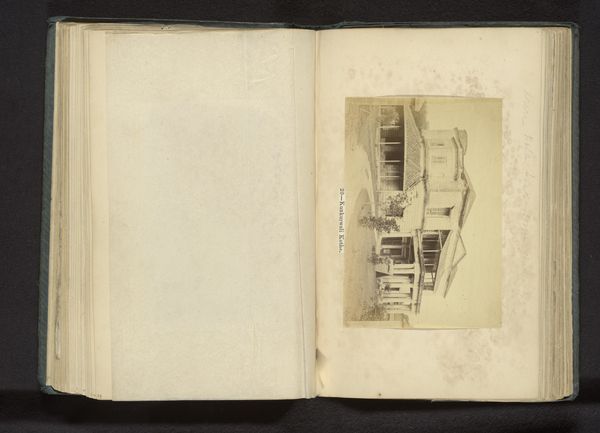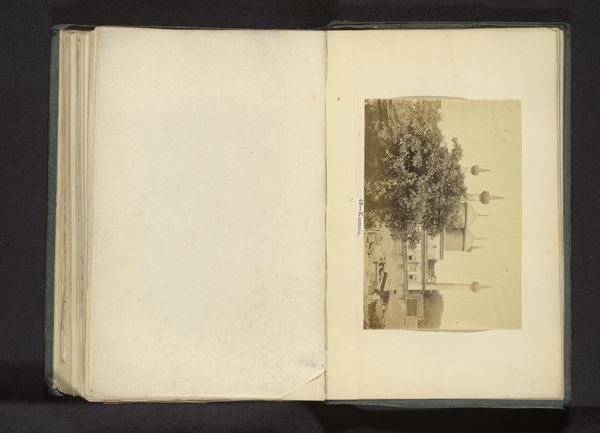
photography, albumen-print
#
aged paper
#
homemade paper
#
paper non-digital material
#
paperlike
#
sketch book
#
landscape
#
paper texture
#
photography
#
personal sketchbook
#
orientalism
#
paper medium
#
sketchbook art
#
design on paper
#
albumen-print
Dimensions: height 105 mm, width 154 mm
Copyright: Rijks Museum: Open Domain
Editor: This is an albumen print entitled "Gezicht op een huis in Lucknow," by Darogha Ubbas Alli, created before 1874. It's a photograph within a personal sketchbook and I’m immediately struck by the texture of the aged paper. It really draws attention to the photograph as an object. How do you interpret this work? Curator: The image itself is, of course, interesting. But as a materialist, I'm more interested in the book as an object and its production. Look at the visible handmade quality of the paper, the visible labor involved in assembling this sketchbook. This transforms the photograph. It isn’t simply an image, it’s embedded in a network of making and consumption. What does the “homemade paper” tell us about the materials that were accessible at this moment? Editor: I hadn't thought about it that way, that the physical creation is just as informative as the image. I was really focusing on the architectural photograph. Curator: Think about the act of photography itself. What resources were necessary to produce that image, transfer it, and then paste it into a book? What kind of resources are required to make it durable? The type of paper also speaks to its use in creating art of the time. Editor: So, seeing it as a collected, material object highlights the production process and social context. Curator: Exactly. It invites us to consider the labour and materiality involved, blurring the line between “high art” and “craft” often imposed upon photography. The work’s value lies not just in its representational skill but in the physical journey and accessibility of materials inherent to its creation. Editor: I’m walking away thinking about how the paper it's printed on adds an extra layer of depth to our understanding, making us consider the book as more than just the photographs within. Curator: Precisely. It is the image as an object. That consideration helps reveal its history.
Comments
No comments
Be the first to comment and join the conversation on the ultimate creative platform.
